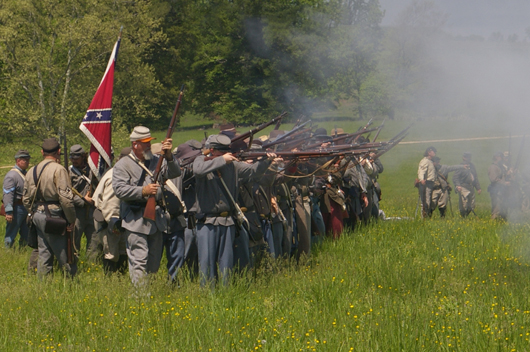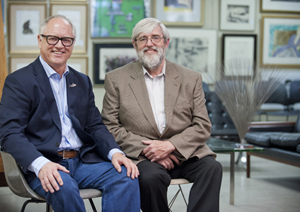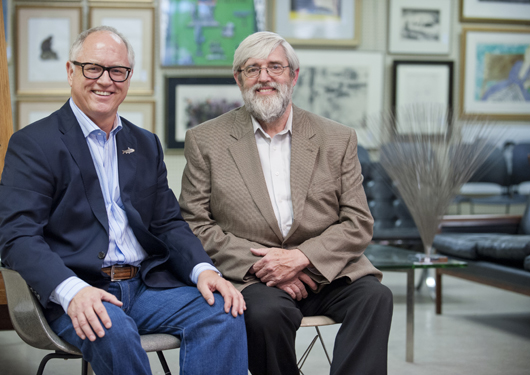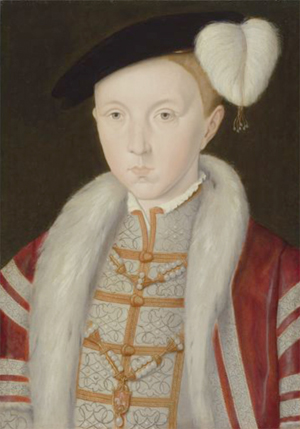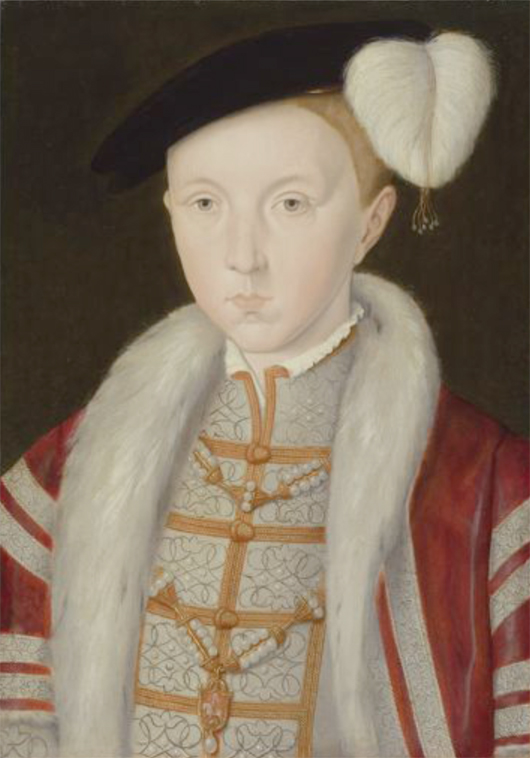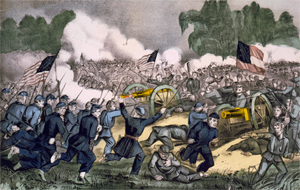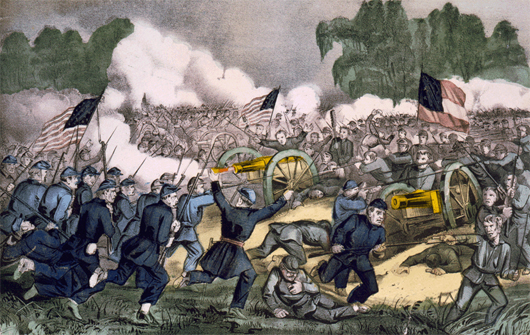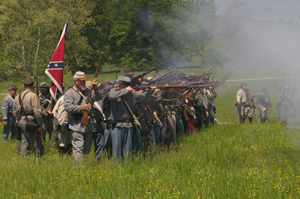
GETTYSBURG, Pa. (AP) – The switchboard lit up at the Quality Inn Motor Lodge as soon as the motel started accepting reservations.
“There was a feeding frenzy,” said Paul Witt, the general manager.
Within hours on the July morning, all 109 of the inn’s rooms were gone – and calls kept coming as more history-lovers sought lodging during next year’s 150th anniversary re-enactment of the Battle of Gettysburg.
At Witt’s America’s Best Value Inn across the street, it was the same story. Seventy-six rooms gone in no time.
Ten months before the July 3-7 commemoration of the Civil War’s bloodiest battle, many of the accommodations within a 20-minute drive have been snagged in anticipation of the $1 million event, which promises to be one of the biggest and most authentic ever.
Tens of thousands of people from the United States, Australia, Britain, Germany, and elsewhere plan to visit as participants and spectators, organizers say.
The number of re-enactors may be cut off because only so many soldiers, artillery pieces, and horses can fit, they say.
“This is our Olympic moment,” said Randy L. Phiel, chairman of the Adams County commissioners and the re-enactment’s operations manager.
“Every (anniversary) that ends in a zero or a five becomes a national and international event,” Phiel said. “The re-enactment community looks at the 150th as the pinnacle.”
The Woodstock-like spectacle – to be held on the Redding and Entwhistle farms north of town – will portray the fighting of July 1-3, 1863, including Pickett’s Charge, the climactic, unsuccessful Southern attack that ended the battle. Admission is $35 for a day, $90 for four days.
The sesquicentennial event’s scale is remarkable: up to 15,000 blue- and gray-clad soldiers, 100 cannons, hundreds of horses, and an expected 60,000 spectators who will browse Civil War-related wares, attend music performances, see period balls, and visit Yankee and rebel camps spread over 800 acres.
Organizers have spent hundreds of thousands of dollars to lay gravel roads to re-enactor camps on the leased farms. And they will install about 1,000 feet of five-rail fencing like the kind the rebels’ gray ranks met when they tried to cross Emmitsburg Pike in Pickett’s Charge.
They have built a stone wall to mimic one that shielded Union forces on July 3, and they plan to re-create the famous copse of trees that was the target of Confederate Gen. Robert E. Lee’s main attack on the third day.
Spectator stands, mountains of mulch, and dozens of watering troughs for horses have been acquired.
The event is being held by the Gettysburg Anniversary Committee: Phiel, 61, a retired National Park Service law enforcement ranger and Gettysburg native; Tony Strickland, 60, another native, who has four gift shops in Gettysburg; and George H. Lomas, 70, who attended Philadelphia’s Germantown High School, has shops in town, and helps organize Civil War re-enactments, including the Battle of Antietam’s sesquicentennial at Sharpsburg, Md., this month.
About 400 workers – nearly 300 more than at smaller Gettysburg reenactments the organizers have held since 1995 – will help manage the gates, sell merchandise, shuttle the handicapped, and take water and hay to horses.
The smaller re-enactments usually cost about $300,000 to put on, Phiel said. This one will run more than three times that. It’s funded by re-enactor registration fees, ticket and merchandise sales, and private capital.
A 125th anniversary re-enactment, organized by out-of-towners, “fell short when it came to resources, parking, and sanitation,” Phiel said.
“We are local community members and have to walk down the street on Monday morning” after the event, he said. “We thought we could do it as well as anyone.”
Businesses hope to cash in. Some motels and hotels are asking for more than $300 a night, double the normal rate. Visitors have sought lodging as far as Hagerstown, Md., 40 minutes away. The planners hope to provide rooms for their own staff at the Lutheran Theological Seminary in Gettysburg.
From town, the crowds will travel about three miles to the rolling fields of the Redding and Entwhistle farms, which were unaffected by fighting in 1863.
Quiet and serene, the land slopes on either side of Table Rock Road toward picturesque farmhouses and barns – the perfect setting for a battle to include cavalry clashes, long lines of soldiers, musket volleys and explosions.
“I’ve been re-enacting for 50 years, since I was 18 at the 100th anniversary of the Battle of Manassas,” Lomas said. “This is going to be a great experience for re-enactors.
“I can’t describe it in words,” he said. “It gives you chills it’s so awesome.”
On a recent tour of the Entwhistle farm, Lomas and Strickland imagined the woods and fields covered with Confederate tents and soldiers.
“You won’t find any Pepsi cans here,” Strickland said. “We don’t let anybody on the field who will disrupt the authenticity.”
One re-enactor will be Terry Jones, a sculptor who created a battlefield monument to Union Gen. John Gibbon, a Philadelphian who commanded troops at the so-called Angle, the target of Pickett’s Charge. He is one of only four living artists with a monument on the field.
Jones has created a 150th commemorative Battle of Gettysburg sculpture, to be sold at the event and in town. At the event, he plans to portray artist Alfred Waud, whose battle sketches were turned into woodcuts and appeared in newspapers of the day.
“This is beautiful,” said Jones, 65, of Newtown Square, as he looked over the field. He has created dozens of major sculptures in Philadelphia and across the country, including the Angel of Marye’s Heights monument outside the National Civil War Museum in Harrisburg.
“The re-enactors are going to love this,” he said.
Jones, Strickland, and Lomas crossed Table Rock Road and gazed across the sprawling field where Pickett’s Charge will be. More than 150,000 took part in the three-day battle, at least 10 times the number of re-enactors expected. About 50,000 were listed as killed, wounded, captured, or missing in 1863.
“There will be a half-hour cannon barrage before the charge,” Lomas said. The Confederates will stream “past the barn and house (at Entwhistle), past the cannons.
“The battle is choreographed so each unit knows where it will be …,” he said. “Safety will be a big factor. Every (weapon) is checked before each battle.”
Pyrotechnic ground explosions will go off as the Southerners disassemble the fence along Table Rock Road – representing Emmitsburg Pike – for the final charge toward federal troops along the stone wall, Phiel said.
“Not many will make the wall,” he said. “When the cannon go off, entire units will fall. …
“In the real battle, (scores of) cannon were filled with canister – metal balls – and many units were actually vaporized,” Phiel said. “Can you imagine marching straight into the cannon in Napoleonic fashion, side by side, rank upon rank?”
Confederate and Union forces will engage “in hand-to-hand combat,” pushing the federals back until reserves pour in to end the attack.
“At that point in the real Pickett’s Charge, the Confederates retreated back across the field,” Phiel said. “But in the re-enactment, everything will stop. You will hear Taps played (and) everybody will come to attention.
“It will be a very poignant moment, a moving, once-in-a-lifetime experience,” he said. “When that is over, hats will be thrown in the air and there will be shaking of hands across the wall. …
“We make dusty, old history books come alive.”
___
Online:
http://bit.ly/S7UUu3
___
Information from: The Philadelphia Inquirer, http://www.philly.com
Copyright 2012 Associated Press. All rights reserved. This material may not be published, broadcast, rewritten, or redistributed.
AP-WF-09-11-12 1617GMT
ADDITIONAL IMAGE OF NOTE
